Nine of the worst fires ever to hit Wilmington, and how they changed the Port City
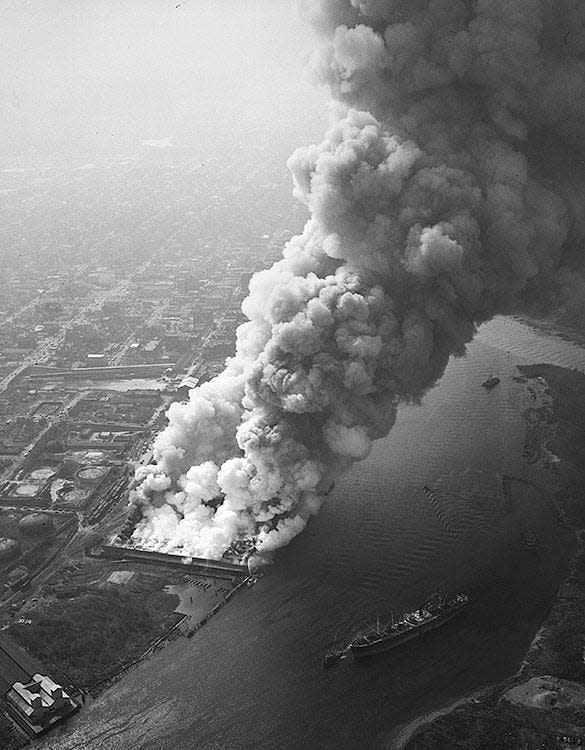
October is National Fire Prevention Month, and it's a good thing to remind ourselves how quickly, and how badly, things can go wrong if we don't put safety first when it comes to fire.
Since Wilmington was founded nearly 300 years ago in 1733, fires have made their mark on the city numerous times. Thankfully, the frequency of fires has decreased in recent decades, but the fact remains that fires have left a lasting legacy in the Port City.
Here's a look at some of the biggest, and the most significant, fires ever to occur in Wilmington.
Colonial era and 1700s
According to a 1975 bulletin from the Lower Cape Fear Historical Society, "Throughout the colonial era the (town's) commissioners … grappled with the constant threat of fire." Notable fires burning multiple buildings occurred in the years 1756, 1775 and 1786, which isn't that surprising when you consider that people burned wood and coal for warmth back then and that most houses were also made of wood.
Visiting after the 1786 fire, one Robert Hunter Jr. was inspired to throw some shade on Wilmington, writing that "the late fire has entirely destroyed the beauty of the town, if it ever possessed any."
There's fire, and then there's getting roasted.
Fire of 1798
If you look around, you'll notice that just a half-dozen structures in Wilmington pre-date 1800. A big reason for that is a massive November fire in 1798 that by some accounts destroyed or damaged all but about 12 houses in the entire town. (One notable survivor was the Mitchell-Anderson House at Front and Orange streets, which was built in 1739 and is Wilmington's oldest structure. Also, it's made of brick.)
Just like people tend to do after disasters, Wilmingtonians quickly got to work rebuilding and getting on with the business of everyday life. According to a note in Hall's Wilmington Gazette from Nov. 15, 1798, the merchants Wilkings & Scott "since the fire, have removed their goods to the back part of the store occupied by Mr. Nutt, facing Mr. Geer's where they have a general assortment suitable for the season."
Fire of 1819
Some 300 houses and building were destroyed in this November fire, including the new Presbyterian church, according to the old Cape Fear Recorder newspaper. One person died, and the fire did an estimated $650,000 in damages, which would be about $16 million today.
Fire of 1886
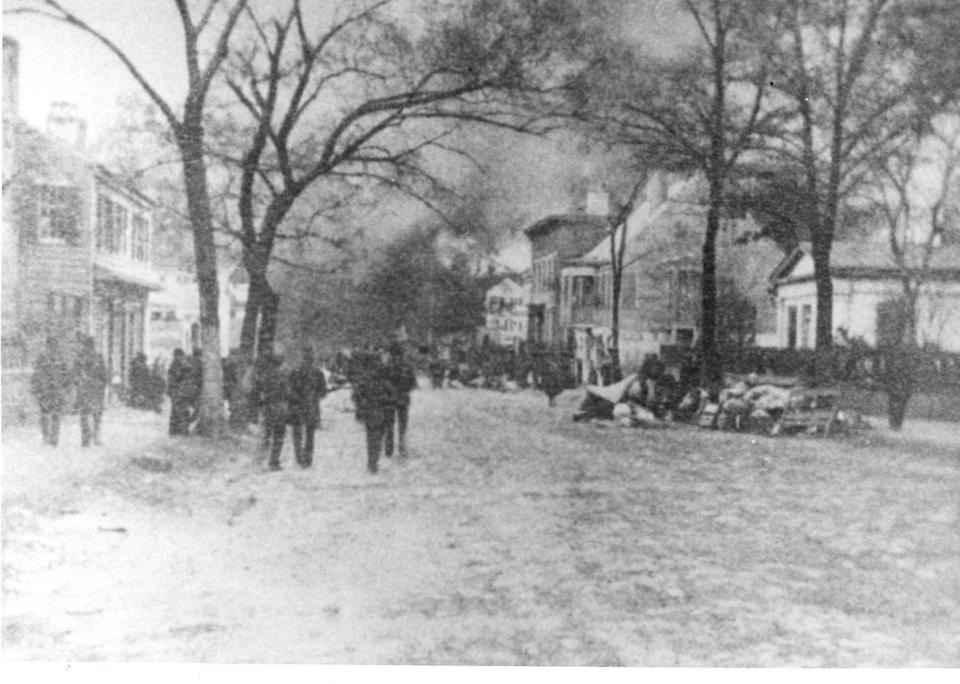
At the time it occurred this was the costliest fire in Wilmington's history, causing as much as $1.5 million in damages, or nearly $50 million in today's dollars.
According to a Feb. 21, 2020, Facebook post from the Wilmington Fire Department on the fire's 134th anniversary, the fire "started at the foot of Chestnut Street and burned for several days before being brought under control."
The fire started on the steamboat Bladen, which was loaded with cotton and highly flammable naval stores.
"The steamboat drifted into the wharf, spreading flames ashore. Fire swept north along the east bank of the river until wharves, warehouses and other waterfront buildings were completely engulfed in flames, overwhelming the volunteer fire companies."
With many telegraph lines destroyed, a hero named Clem Brown climbed a telegraph pole and contacted fire departments in both Goldsboro and Florence, South Carolina. "The Florence firefighters were loading their equipment at the Florence train depot 20 minutes after receiving the call, and three hours later were in Wilmington ready to help fight the fire."
Two churches burned, and "all properties in the area of Red Cross, Third, and Princess streets were destroyed. Hot embers also caused the fire to spread to Sixth and Swann Streets, destroying another complete block of businesses."
1934 Wrightsville Beach fire
It didn't happen in Wilmington proper, but this fire remains one of the most significant in the history of New Hanover County. More than 120 buildings were destroyed, including the Oceanic Hotel, built in 1905 as the Hotel Tarrymore. As noted in a StarNews story on the fire from 2020, the fire laid "a path of destruction not seen again until Hurricane Hazel 20 years later."
Annals of history The great 1934 fire that almost destroyed Wrightsville Beach
Orton Hotel fire
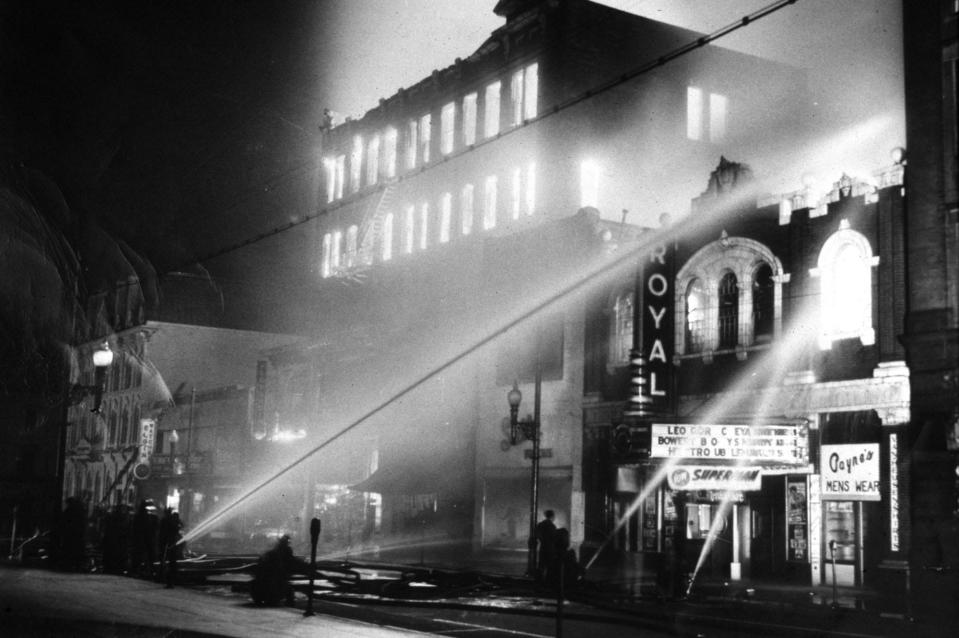
Wilmington old-timers still recall being taken downtown by their parents in January of 1949 to watch this historic building burn. Built in 1888, the Orton Hotel was described in a 1993 StarNews article as "a fine brick building with 100 rooms and first- and second-floor porches with gingerbread trim."
Late Wilmington doctor and historian Robert M. Fales is quoted in that story as saying, "It was considered the finest hotel in North Carolina for years after it was built."
By 1949 it had gotten a little shabby, though, and when it burned it caused about $400,000 in damages ($5 million today) to the Orton and six adjacent buildings.
Part of the building remains today: Formerly a basement pool parlor in the Orton, it operated as a bar and pool hall called Orton's for decades. It closed in March of 2020, but owners say they are trying to reopen.
Orton's A Wilmington pool hall remains boarded up. Now 'issue after issue' haunts its reopening
Wilmington Terminal Co. fire
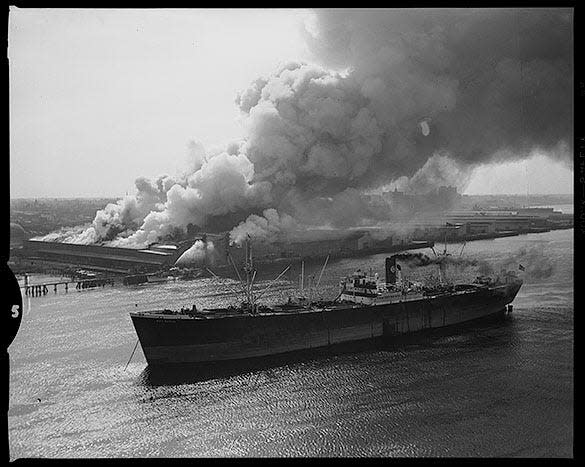
Wilmington fires from back in the day aren't incredibly well-documented visually, seeing as how people weren't carrying around cameras in their pockets at all times until relatively recently.
One exception is the Wilmington Terminal Co. fire of 1953, which, as noted by the University of North Carolina's Wilson Library, was "one of the largest and costliest fires in the history of Wilmington," destroying some $30 million in property (over $300 million today). Hugh Morton, a co-founder of the N.C. Azalea Festival and of Grandfather Mountain, and whose name adorns the Hugh Morton Amphitheater (better known as Greenfield Lake Amphitheater), got some stunning shots of the fire via plane. It was said that smoke could be seen as far as 25 miles away.
From a 2009 UNC University Libraries blog post: "The fire, which broke out in the western end of the Wilmington Terminal Nitrate Warehouse, quickly escalated with a series of explosions that rained molten sodium nitrate over the area. The fire quickly spread from the nitrate warehouse to adjoining buildings, which contained tobacco and sugar. ... As many as 21 firefighters and civilians were injured in the fire, with one succumbing to his injuries a few days later."
Thalian Hall fire
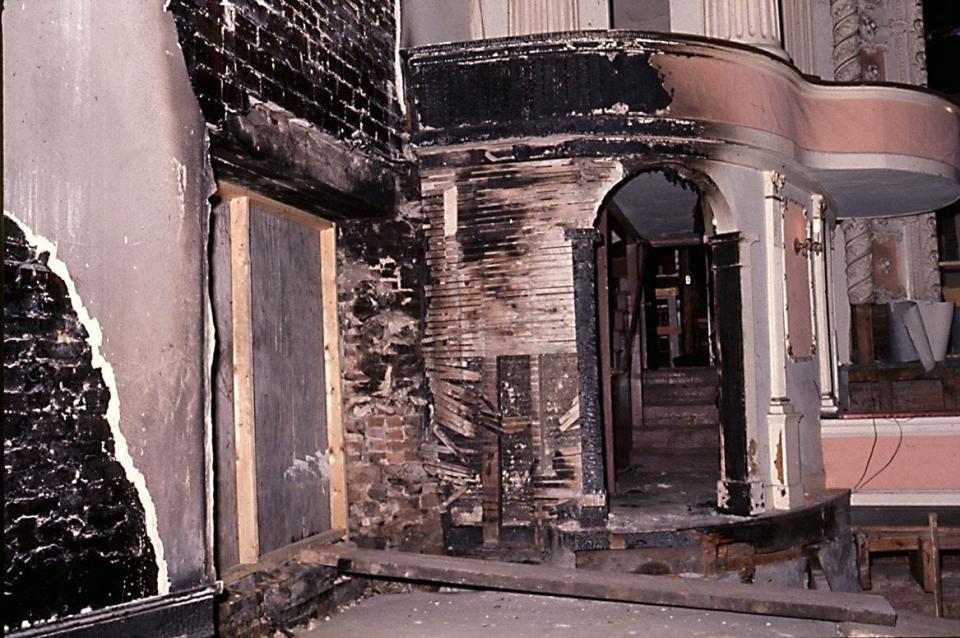
A relatively minor fire in terms of damages, but major in terms of future impact.
According to the website of historic Wilmington theater Thalian Hall, which was built in 1858, "Following a small fire in the auditorium in 1973, the theater was restored to its turn-of-the-century appearance ... After reopening in 1975, Thalian Hall witnessed a dramatic increase in use by professional artists and community groups, and audience attendance rose."
That revival in interest set the stage for the late Tony Rivenbark, who took over as director in 1979 and ran the Hall until his death in 2022, greatly increasing the Hall's profile.
Hemenway Hall
Most of the major fires from Wilmington's history appear to be unintentional, but there's at least one that probably wasn't: the fire that burned Hemenway Hall in 1972.
Formerly an elementary school built in 1915 called Hemenway School, at the time it burned Hemenway Hall served as the headquarters for New Hanover County Schools. The official cause of the blaze remains "fire of undetermined origin," one that took place during a time of great racial strife locally, with many whites up in arms about the integration of public schools.
The former site of Hemenway Hall, on Chesnut Street between Fifth and Sixth, is now Bicentennial Park.
Local history 50 years later, fire that destroyed Hemenway Hall in Wilmington remains a mystery
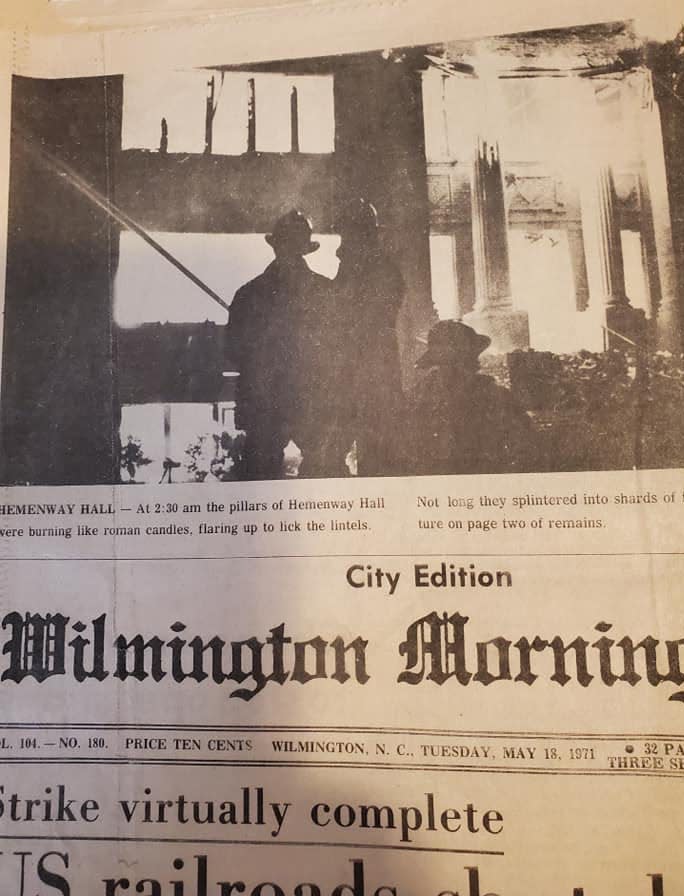
This article originally appeared on Wilmington StarNews: The worst fires ever to hit Wilmington NC

